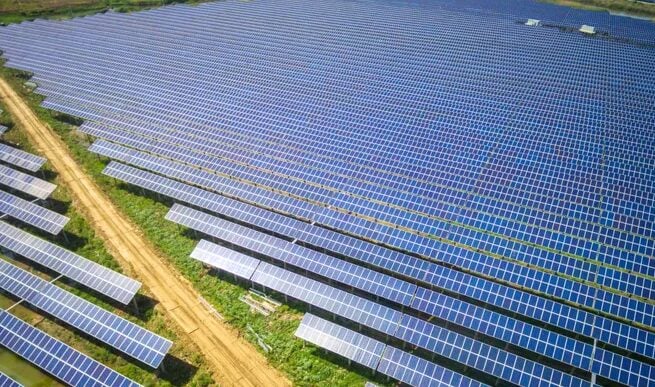
Muswellbrook Shire Council in New South Wales, Australia, has backed a solar module recycling mandate for a 135MW solar PV plant being developed by Swedish solar developer OX2.
The solar PV plant, which will feature up to 300,000 modules and a 135MW/270MWh two-hour duration battery energy storage system (BESS), will be located 2.5km east of Muswellbrook, 243km north of the state capital Sydney.
Try Premium for just $1
- Full premium access for the first month at only $1
- Converts to an annual rate after 30 days unless cancelled
- Cancel anytime during the trial period
Premium Benefits
- Expert industry analysis and interviews
- Digital access to PV Tech Power journal
- Exclusive event discounts
Or get the full Premium subscription right away
Or continue reading this article for free
Muswellbrook Shire Council anticipates that around 10% of the solar PV plant’s modules will be faulty or damaged in transit or installation. As a result, the council has asked the New South Wales Independent Planning Commission to safeguard the shire’s waste management facilities from accepting solar modules in landfills.
The resolution shielding Muswellbrook Shire from landfill obligations during construction and the life of the solar plant also applies to private landfills, stipulating that faulty modules be recycled, rehabilitated, or reused instead.
Muswellbrook Shire Mayor Jeff Drayton said the council could use its coal mining experience to understand projects’ long-term implications better.
“As a council we’re taking a clear stand to make sure solar modules aren’t a future burden for our community but are actually a resource. By mandating that all defective panels during the life of the project are recycled and rehabilitated, we are setting the standard for new energy projects,” Drayton added.
According to planning documents, the project will be split into a northern and southern section. The north section will house a solar array across an area of 48 hectares. The southern section will hold a more extensive solar array spanning 181 hectares, along with the BESS, switchyard and the proposed transmission connection.
There would be a solar generation split between the two sections, with the northern section generating around 20% (27MW) of the total capacity and the southern 80% (108MW). Construction of the site is expected to commence in Q4 2025 and last around 31 months.
Muswellbrook Shire Council director of environment and planning Sharon Pope added that the council’s resolution aligns with the shire’s commitment to minimise the footprint of energy generation.
“By requiring recycling and rehabilitation of damaged modules, we align with the Australian Circular Economy Framework, which aims to double the circularity of resources by 2025,” Pope said.
Solar module recycling in Australia
Given Australia’s strong solar credentials and anticipated growth in the coming years and decades, it is crucial to establish module recycling facilities across the country. This will help maintain a circular economy and safeguard against the shortage of rare materials, such as copper and silver.
Indeed, highlighting the extent of the issue, Potentia Energy, a joint venture co-owned by Enel Green Power and INPEX Renewable Energy Australia, revealed that around 1.4 million solar PV modules will reach their end-of-life in 2025 across Australia, highlighting the urgency for recycling initiatives. It is worth noting that Potentia Energy is the new name of Enel Green Power Australia, following a rebrand at the end of 2024.
These issues were further highlighted by Australian module manufacturer Tindo Solar’s CEO, Richard Petterson, who exclusively told PV Tech Premium that if Australia installed around 1TW of solar modules in around 25 years, to keep the assets running, the nation would need to recycle around 40GW of modules each year.
Should the country be less ambitious and install 500GW, Petterson added that 20GW of modules will still need recycling each year.
The topic was also explored in a PV Tech Premium article released in early 2024. Here, it was highlighted that although previous forecasts had predicted that solar PV waste would not appear in Australia until after 2030, the problem had become “more immediate than previously anticipated”, with waste volumes emerging in the next two to three years, particularly in New South Wales, Victoria and Queensland.
Queensland stepped up its efforts to recycle solar PV modules in 2024 via a scheme expected to save about 26 tonnes of waste from entering landfills. Launched in conjunction with Australia’s Smart Energy Council, the Solar Panel Stewardship programme was introduced with six solar module collection sites across the state.
The ongoing issues surrounding solar waste management have also led to several notable deals being signed recently. For instance, Australian-based solar PV recycling company ElecSome has signed partnerships with Enel Green Power Australia and INPEX Renewable Energy Australia, as well as Australian energy major AGL Energy, to tackle solar module recycling.






